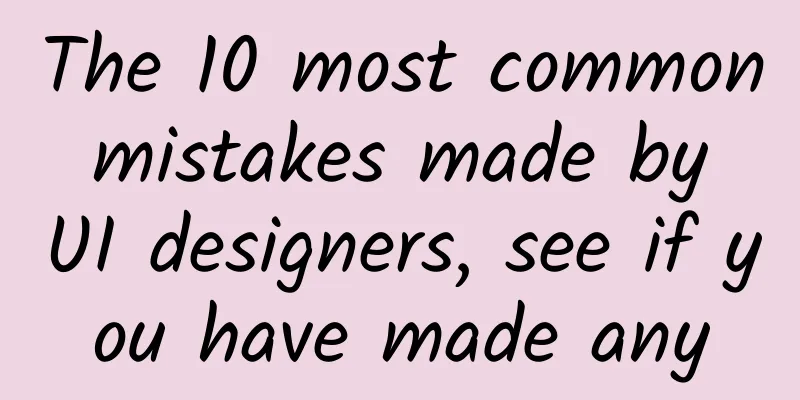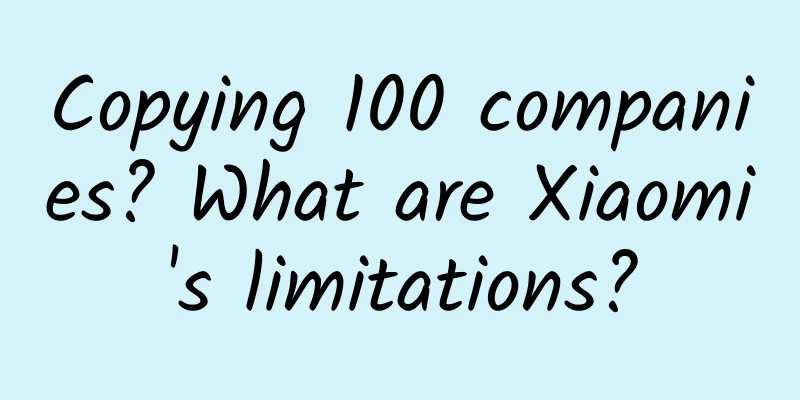Android architect's in-depth understanding of RecyclerView reuse and caching mechanism

|
This article is reprinted from the WeChat public account "Android Development Programming", the author is Android Development Programming. Please contact the Android Development Programming public account for reprinting this article. PrefaceLearning source code and studying source code programming ideas are the only way for programmers to advance Everyone knows that RecyclerView has a recycling and reuse mechanism, so how does the recycling and reuse mechanism work? Today we will use source code to explain and learn together 1. Recycler IntroductionRecyclerView is a cache managed by the internal class Recycler, so what is cached in Recycler? We know that RecyclerView can still slide smoothly when there is a lot of data, and RecyclerView itself is a ViewGroup, so it is inevitable to add or remove sub-Views when sliding (sub-Views are created through onCreateViewHolder in RecyclerView#Adapter). If the sub-Views have to be recreated every time they are used, it will definitely affect the smoothness of sliding. Therefore, RecyclerView caches ViewHolder (which contains sub-Views) through Recycler, so that sub-Views can be reused when sliding, and under certain conditions, the data bound to sub-Views can also be reused. So in essence, caching is to reduce the time of repeatedly drawing Views and binding data, thereby improving the performance of sliding.
Recycler caches ViewHolder objects at four levels, with the priorities from high to low being: 1. ArrayList mAttachedScrap --- Cache the ViewHolder of the visible range on the screen 2. ArrayList mCachedViews ---- caches the ViewHolder that will be separated from the RecyclerView when sliding, cached by the position or id of the child View, and stores up to 2 by default 3. ViewCacheExtension mViewCacheExtension --- Cache implemented by the developer 4. RecycledViewPool mRecyclerPool --- ViewHolder cache pool, which is essentially a SparseArray, where the key is ViewType (int type) and the value is ArrayList< ViewHolder>. By default, each ArrayList can store up to 5 ViewHolders. 2. Detailed Analysis of Cache MechanismWhen RecyclerView slides, onTouchEvent#onMove is triggered, and the recycling and reuse of ViewHolder will begin here. We know that when setting RecyclerView, we need to set LayoutManager. LayoutManager is responsible for the layout of RecyclerView, including the acquisition and reuse of ItemView. Taking LinearLayoutManager as an example, when RecyclerView is rearranged, the following methods will be executed in sequence: onLayoutChildren(): Entry method for layout of RecyclerView fill(): Responsible for continuously filling the remaining space, the calling method is layoutChunk() layoutChunk(): Responsible for filling the View, which is ultimately found by finding a suitable View in the cache class Recycler The entire call chain above: onLayoutChildren()->fill()->layoutChunk()->next()->getViewForPosition(), getViewForPosition() is to get the appropriate View from the RecyclerView recycling mechanism implementation class Recycler, The following mainly looks at the implementation of Recycler#getViewForPosition().
They will all execute the tryGetViewHolderForPositionByDeadline function and continue to follow it: //Get ViewHolder according to the passed position
The ViewHolder obtained through mAttachedScrap, mCachedViews and mViewCacheExtension does not need to recreate the layout and bind data; the ViewHolder obtained through the cache pool mRecyclerPool does not need to recreate the layout, but needs to rebind the data; if the target ViewHolder is not obtained in the above cache, Adapter#onCreateViewHolder will be called back to create the layout, and Adapter#onBindViewHolder will be called back to bind the data SummarizeThere are two structures involved in the recycling and reuse of RecyclerView in the sliding scenario:
|
<<: Google's Android beta device search feature exposed: supports network and car search platforms
Recommend
How do astronauts use electricity in space?
At 9:22 on June 17, astronauts Nie Haisheng, Liu ...
How to use Xiaohongshu for promotion and marketing?
Xiaohongshu is very popular now, and major beauty...
Love concept "explosion"! 99% of the roses you received on Valentine's Day are fake?
Every February 14, all the roses in the flower sh...
When you have insomnia or can’t sleep, does closing your eyes and “squinting” count as resting?
The cover image of this article comes from the co...
Today, call 81192 again, please return!
"81192, please return!" Every year on t...
Stay away from 11 risk factors that threaten brain health and teach you the "secrets" to keep your brain healthy
Research results recently published in the intern...
The VR Fund: AR company industry map in the second quarter of 2017
The Venture Reality Fund, which focuses on VR/AR ...
The journey of snail noodles is not only stinky and fragrant, but also has these 3 highlights
Guangxi is a place with little presence. It does ...
Can China's Yongle Palace murals, which are as large as 1,000 square meters, be restored by AI?
Nowadays, artificial intelligence (AI) is not onl...
Testin Cloud Testing CTO Xu Kun: Service-driven cloud testing
[[127491]] Xu Kun, CTO of Testin Cloud Testing. H...
MediaCom: The rise of the machines
This white paper interprets the changes that arti...
Is Baidu's L4 autonomous driving reliable by betting on AI chips?
In July 2017, Baidu CEO Robin Li sat in a self-dr...
From Didi to Mobike, the sharing economy has to overcome two major challenges
"Sharing economy" is the most popular w...
Look once, it's weird, look again
There is a type of insect that lives on the earth...









